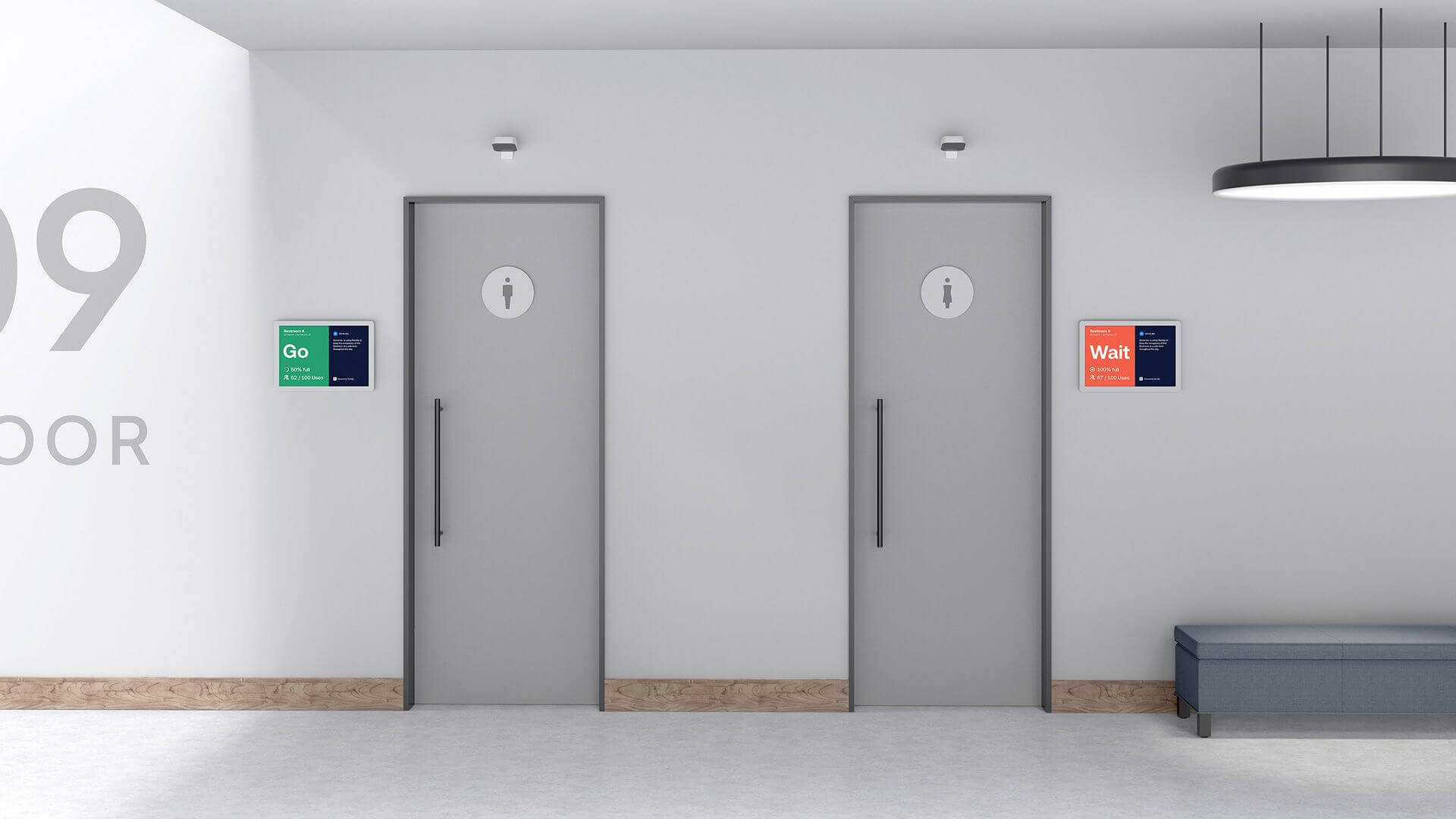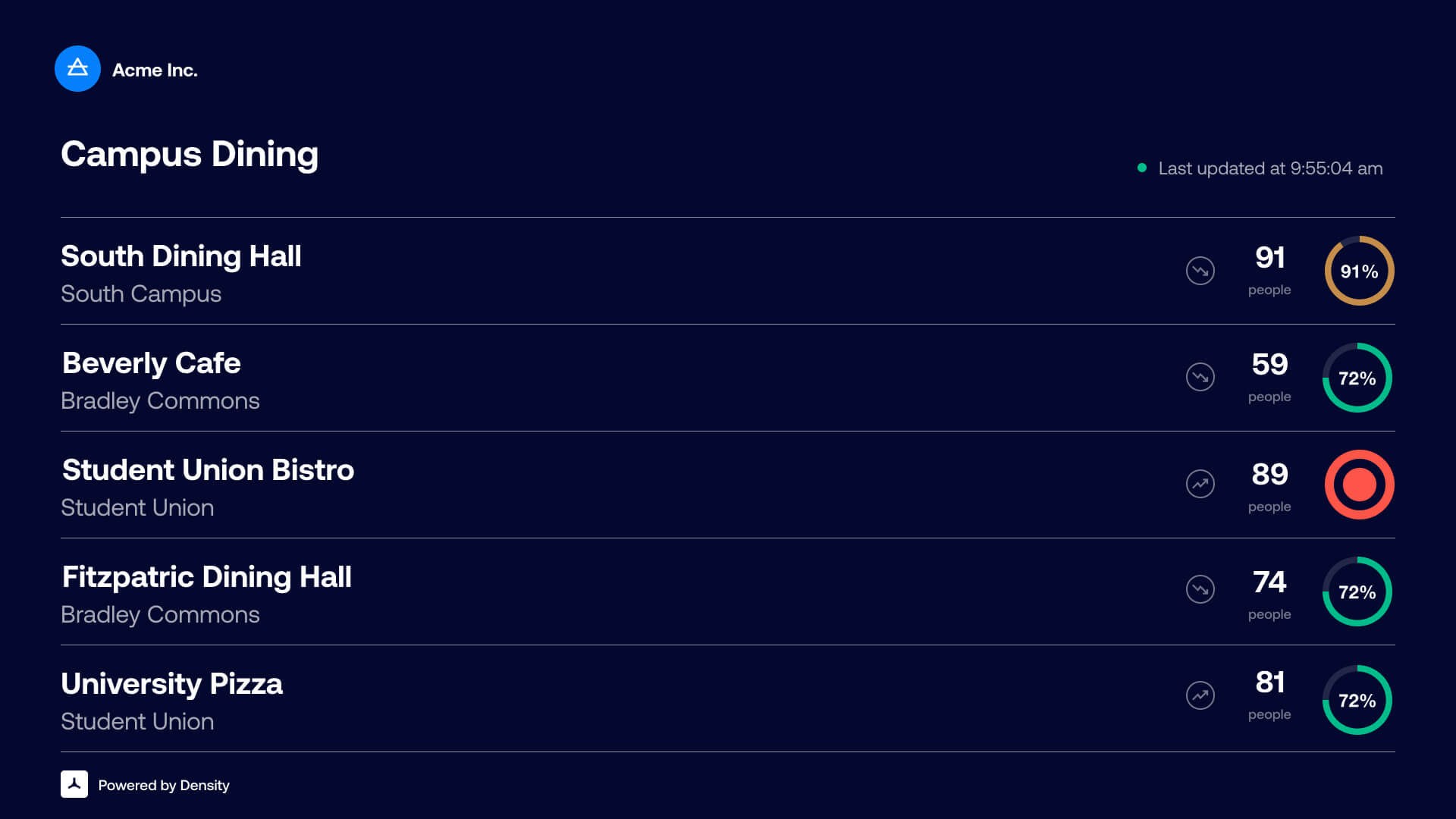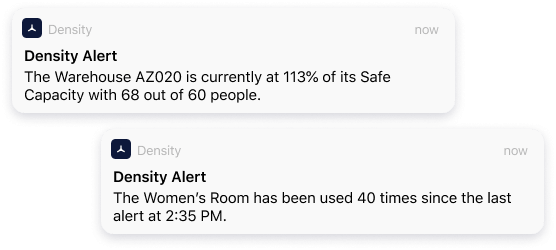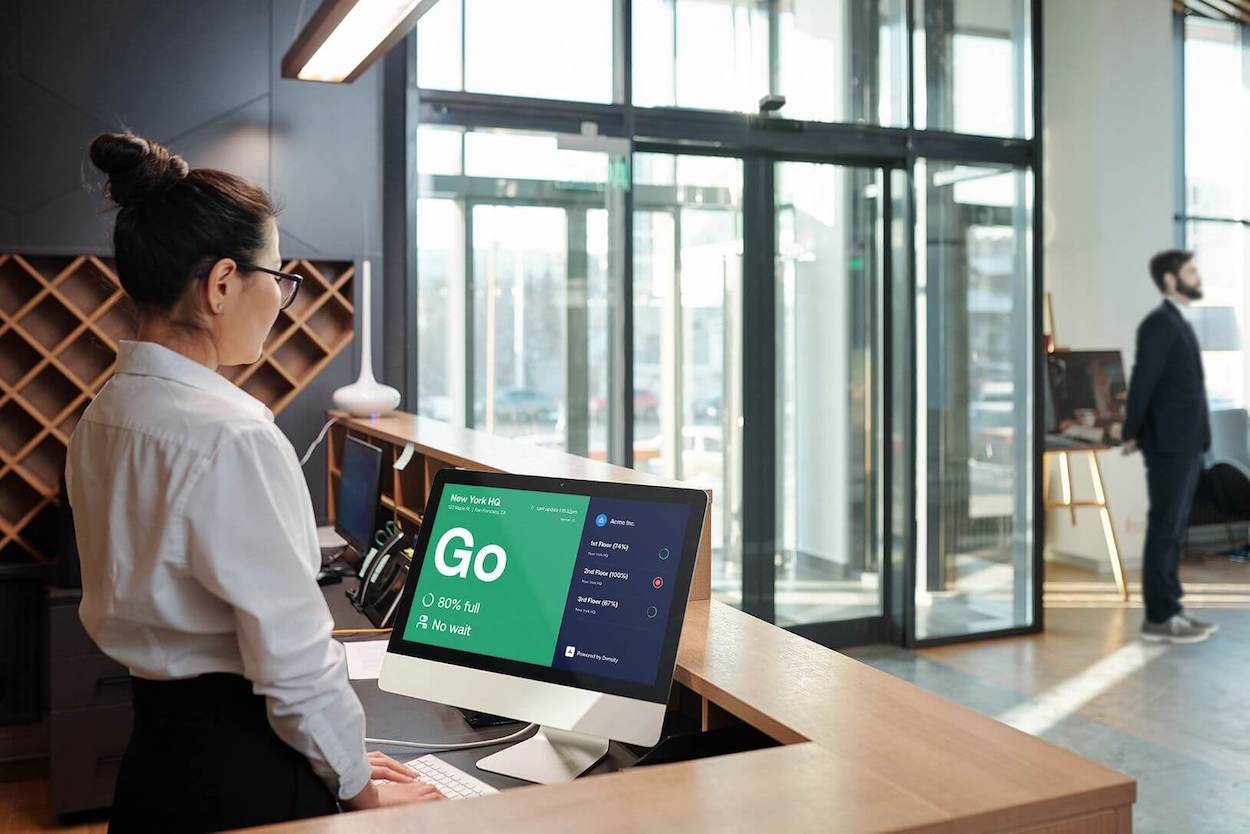When employees return to work, they want to minimize the objects they touch. They want to know that the rooms they spend time in are safe. And they want to know their employers aren’t complacent with safety measures.
Creating a phygital office experience makes all this possible.
The post-COVID “phygital” office
In retail, a phygital experience connects the physical and digital world to enhance the customer experience. Look at it as a formula: digital + physical = enhanced experience.
A prime example is the Amazon Go grocery store. Customers scan a code with their smartphone (digital), go to the grocery store to pick up the products they want (physical), and leave without having to wait in line to check out (enhanced experience).
The post-COVID office can take a page out of this playbook. Even with the persistence of remote work, physical offices still matter. Most employees want to return to the office, at least part of the time.
Creating a phygital office will make them feel safe at work while also enhancing their overall experience. Here’s how.
Fewer touchpoints
Touching a surface infected with the coronavirus is not thought to be the primary cause of the spread of COVID-19. Still, a person could get COVID-19 by touching a surface or object with the virus on it and then touching their own mouth, nose, or eyes.
The CDC recommends washing or sanitizing your hands after contacting any commonly touched area like door handles, keypads, and counters. That’s obviously good advice. But minimizing touchpoints overall will give your employees greater peace of mind.
There are several office touchpoints that you can eliminate with touchless technology.
Sign-in screens
Many companies require visitors and employees to sign in to a space using a touchpad. Some companies still use pen and paper. Apps like Envoy make the sign-in experience seamless and touch-free. It allows visitors and employees to sign in with an app or QR code (so they only have to touch their phones).
Going touchless also makes signing in quicker and showcases your brand as forward-thinking to visitors and guests.
Doors handles
Door handles are bacteria hotspots. There are many ways to reduce the need to use these handles. Some offices have automatic doors, but that’s not realistic for all offices or instances.
Some offices already use badges to grant access to spaces. While badges can help minimize cross-contamination, they can be a pain to assign and deliver key cards to employees.
Your employees always carry their phones with them. Tools like Kisi and Openpath simplify the process by turning phones into “badges.” You control access levels. Your employees don’t have to worry about carrying (and losing) their badges.
Point-of-sale screens
When COVID first hit, many retail and foodservice businesses stopped accepting cash. They switched to card payments to minimize cross-contamination. But patrons still had to complete transactions on a point-of-scale screen touched by countless others before them.
There’s a better way to handle purchases in areas like your office cafeteria — contactless credit-card devices. These devices are easy to find. Square and Clover are popular solutions. Employees can pay by tapping their phones, watches, or cards. You can even add contactless technology to vending machines (Ingenico, 2020).
Reduce uncertainty
For the better part of a year, we all lived (and worked) in bubbles. Going to the grocery store was our biggest adventure — and for many, it was a journey met with incredible anxiety.
While you can’t completely remove employees’ return-to-work anxiety, you can arm them with the information they need to make decisions for their own health and safety. Many companies use Density technology to make this happen.
Arm employees with the information they need to make decisions for their own health and safety.
With Density, employees can know how safe a space is before they enter.
Our sensors count people (anonymously) in any space in real-time. Employers can then share that data with their employees in a variety of ways to reduce uncertainty. Below are two examples:
Show whether a space is safe to enter
Employers can install a display (like a monitor, iPad, etc.) outside a space to show the current and maximum occupancy of that space (as counted by our sensors). These displays clearly show whether it’s OK for employees to enter a space or not.

Safe Display is a powerful tool anytime an employee needs to enter a space but can’t see into it first (like bathrooms, lobbies, break rooms, dining halls, and staircases).
See which spaces are safe — from afar
With Safe by Density, you can share a unique URL or QR code with employees (on your website, internal wiki, etc.). Employees click on that URL or scan the QR code to see the occupancy levels of every space in your building or across your real estate portfolio:

This data helps reduce unnecessary trips to the office and removes any uncertainty of space availability. Employees can view the directory to see which rooms, floors, or buildings are safe before going there.
Employees want to know their employers are serious about safety
Adding tools like Envoy for touchless sign-in and Kisi for touchless entry show your commitment to employee safety.
But one of the most effective ways to make clear your commitment is to adapt to changes quickly.
For example, what do you do when your second-floor common area reaches capacity? You’ll earn your employees’ trust and respect if you adjust your procedures to meet the moment.
Companies use Density’s Safe Alerts to know when any space nears its capacity threshold or reaches a certain number of visits (great for streamlining cleaning services based on usage rather than arbitrary schedules).

We’ve had customers see real-time occupancy levels peak mid-day, leading them to send company-wide emails encouraging employees to work from home for the rest of the day.
This timely response to real-time scenarios shows your employees how seriously you take their safety. It also demonstrates you have the technology to maintain safe levels throughout the day.
Your office will change. Your employees’ experience shouldn’t suffer.
The post-COVID office is going to look different. Masks and social distancing may unnerve many employees — they’re a reminder of our new normal.
Technology can help your employees feel (and be) safe while actually enhancing their experience in the office. Rather than sanitize their hands 10 times a day, they can use their phones to enter spaces and pay for lunch. Instead of staying at their desks all day to avoid close encounters, they can see which room and floor are safe to go to — before they make the trip.
Merging the right digital tools inside your physical office will help quell some of your employees’ fears of returning to work. In an era when work-from-home is a realistic alternative, you need to do everything you can to encourage your team to want to come to the office.
